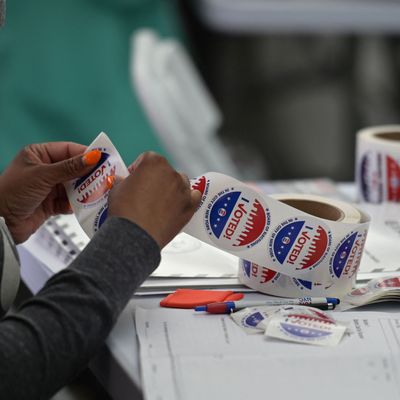
The court-appointed special master released his draft map for New York’s new congressional districts on Monday, and as expected, it draws electoral lines that aren’t as friendly to state Democrats as the court-discarded one they drew themselves.
In his proposed map, Jonathan Cervas, a postdoctoral fellow at Carnegie Mellon University, has created 15 Democratic-leaning districts and five Republican-leaning districts with six competitive seats. Cervas was tasked with drawing new congressional and State Senate maps after the Court of Appeals found that the previously approved maps were unconstitutional. The public can submit comments on the map until Wednesday with a final version expected on Friday.
The initial map released by the Democratic-controlled state legislature had the potential to net Democrats three additional seats in the House of Representatives, bringing their number up to 22 and halving Republican representation to four.
In new map, the 11th District will continue to contain Staten Island, but it no longer includes ultra-blue Park Slope and instead pulls in more of Sunset Park and Bay Ridge. The change appears to give more of an edge to Nicole Malliotakis, the Republican representative who is running for reelection against former representative Max Rose.
Dave Wasserman, the editor of the Cook Political Report, tweeted that the Third District seat left open by Representative Tom Suozzi (who is campaigning for governor) is “now at serious risk for Democrats” under the new lines.
The proposal has other significant implications for the upcoming midterms, as well. Representative Jerry Nadler’s Upper West Side Tenth District has been combined with Representative Carolyn Maloney’s 12th District in the Upper East Side. If approved, the two powerful Democrats, who both chair Committees in the House, will have to decide whether to run in a new district or potentially challenge their longtime colleague. In response, Nadler both criticized the new map and said that if it remains permanent, he’ll run for the 12th District seat.
Maloney later put out her own statement announcing her plan to run for the new 12th district seat, setting up a potentially blockbuster primary.
Representative Sean Patrick Maloney, of the 18th District, has also indicated that if the map stands, he will choose to run in a new district.
“While the process to draw these maps without the legislature is against the will of voters, if the newly-announced maps are finalized, I will run in New York’s 17th Congressional District. NY-17 includes my home and many of the Hudson Valley communities I currently represent,” the DCCC chair said on Twitter.
Representative Hakeem Jefferies, the chair of the House Democratic Caucus, had harsh words for the proposed map, calling it “unacceptable, unconscionable & unconstitutional.”
“The draft redistricting map viciously targets historic Black representation in NY, and places 4 Black members of Congress into the same district. This tactic would make Jim Crow blush,” he said.
There is at least some debate about what the map will ultimately mean for Democrats during the midterms, but only on the question of how much it may cost the party. Wasserman called the proposal “pretty bad news” for Democrats. “With so many competitive seats, it’s not hard to envision a 16D-10R (or even 15D-11R) split on a great GOP [election] night,” Wasserman wrote.
Chief New York Times political analyst Nate Cohn meanwhile tweeted that while he agreed the proposed map “could cost the Democrats a lot of seats in a ‘red wave,’” he thought the map could have been much worse for the party, as earlier proposals had been. The map is “pretty close to a best-case outcome” for Democrats given the circumstances, he concluded.






























